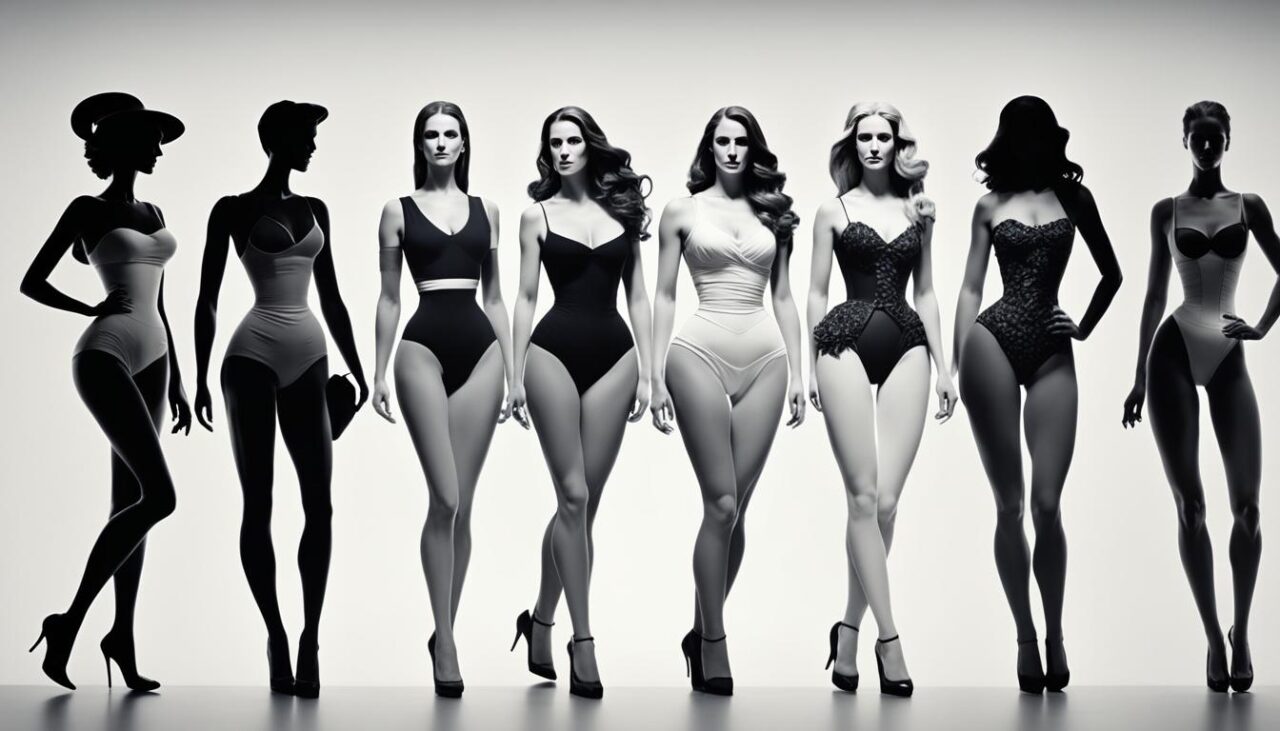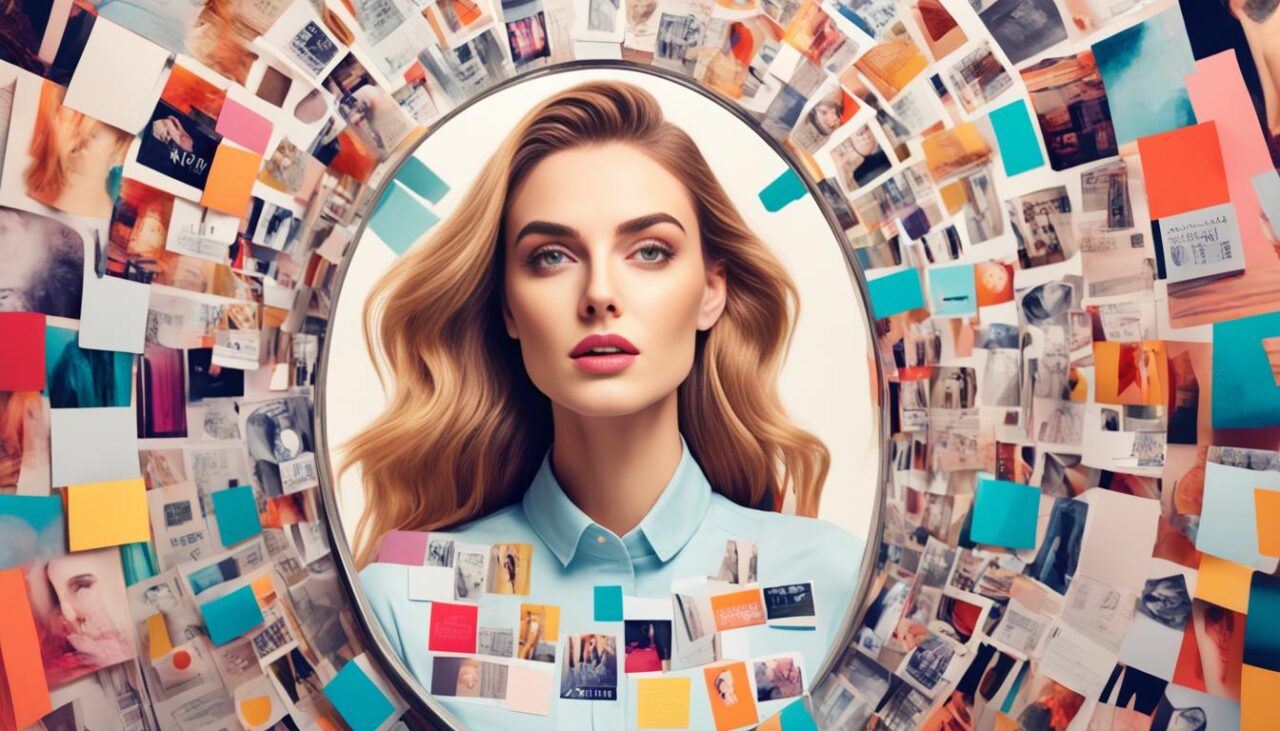As society navigates through the labyrinth of cultural norms and expectations, the media's influence on body image has become a pivotal axis around which modern beauty standards revolve. The prevalence of eating disorders, a dark consequence of these amplified ideals, is alarmingly on the upswing. With each glossy magazine cover, each curated social media post, and each seemingly innocuous advertisement, the impact of beauty standards on health grows increasingly undeniable. This foundational exploration aims to unravel the complex threads between what media celebrates as ideal beauty and the real-life effects on individual self-esteem and mental well-being.
Contents
- 1 Prelude: Media's Role in Shaping Beauty Standards
- 2 Understanding Eating Disorders: Anorexia and Bulimia
- 3 The Correlation Between Media's Beauty Ideals and Eating Disorders
- 4 Case Studies: Real-Life Impacts of Beauty Ideals
- 5 Psychological Perspective: Body Image Issues Stemming from Media's Portrayal
Key Takeaways
- The media's portrayal of beauty significantly shapes public perception of the ideal body image.
- There is a clear correlation between media consumption and the rising prevalence of eating disorders.
- Understanding the harmful impact of beauty standards is crucial for fostering a healthier society.
- Recognizing the media's role can help in creating more realistic and diverse representations of beauty.
- Encouraging positive body image and media literacy can aid in reducing the incidence of eating disorders.
Prelude: Media's Role in Shaping Beauty Standards
Throughout history, media has played a pivotal role in defining and disseminating ideals of beauty. From the voluptuous figures represented in Renaissance paintings to the waifish silhouettes broadcast across 1990s fashion runways, historical beauty expectations have been visually chronicled and amplified through various forms of media. The ever-evolving portrayal not only informs public perception but also molds the aspirations and self-image of individuals across generations.

The Evolution of Beauty Ideals Through Media
The lineage of beauty extends far back, with its depiction constantly being reshaped through the ages. In the bygone eras, portraiture and sculpture carried the influence, extolling the virtues of the era's beauty exemplars. With the advent of print media and eventually the digital explosion, the exposure to and impact of these beauty ideals magnified, becoming a prevalent force in daily life.
The Impact of Advertising on Body Image
Advertising has been at the forefront of setting industry standards, often idealizing specific body types and features that seldom reflect society's diversity. Witnessing an endless cavalcade of airbrushed perfection, consumers are subtly coaxed into aligning their personal aesthetics with these advertising industry standards. This potent visual rhetoric embeds itself in the psyche, potentially distorting one's body image and inciting a pursuit of unattainable perfection.
Celebrity Influence and Social Media Trends
The modern age heralds celebrities and influencers as the new-age deities of beauty, with their meticulously curated images and lifestyles setting the template for public emulation. Celebrity beauty rituals and endorsements catapult particular looks and products to instant fame, perpetuating a cycle where the celebrity and their followers are in constant negotiation over the prevailing beauty narrative. Meanwhile, the social media impact on self-esteem is profound, as these platforms become arenas for comparison and validation through likes and follows, often predicated on one's adherence to the popularized aesthetic norms.
Turning the pages of beauty's historical record, one discerns a pattern where media remains the unwavering custodian of beauty's evolving canon. As it shapes our perception of idealized forms, the silent tide of these influencers reshapes identities and influences behaviors, illustrating the enduring power of the media's portrayal of beauty.
Understanding Eating Disorders: Anorexia and Bulimia
Eating disorders awareness is crucial in today's society, where anorexia and bulimia increasingly affect numerous individuals, disrupting their lives and well-being. Anorexia nervosa is marked by persistent restrictions on food intake leading to significantly low body weight in the context of age, sex, developmental trajectory, and physical health. Signs of anorexia not only include extreme thinness but also intense fear of gaining weight and a distorted body image.
Conversely, bulimia nervosa is characterized by frequent episodes of binge eating followed by compensatory behaviors, such as self-induced vomiting, excessive exercise, or misuse of laxatives. People struggling with bulimia might maintain what is considered a normal weight for their age and height, making symptoms of bulimia less visible compared to anorexia.
Both of these eating disorders entail not only physical health dangers but also profound psychological stress and impaired social functioning. Awareness and understanding are integral in recognizing the early warning signs and providing timely intervention. The treatment for eating disorders generally involves a combination of psychotherapy, nutrition education, medical monitoring, and, when appropriate, medication management. Tailoring treatment to the individual's circumstances is key to effectively addressing the multifaceted nature of these illnesses.
Combating misconceptions and fostering eating disorders awareness is an essential step toward supporting those affected. Education can facilitate early detection, prompt those suffering to seek help, and empower their friends and family to provide the necessary support for recovery.
Only through concerted efforts to illuminate the realities of these conditions can we hope to reduce their prevalence and ensure that individuals have access to the comprehensive care they require.
The Correlation Between Media's Beauty Ideals and Eating Disorders
The interplay between body image and media consumption has long been a topic of concern among health professionals and social scientists. Predominant media messaging often showcases a narrow interpretation of attractiveness, implicitly suggesting that only certain body types align with societal beauty standards. This depiction can heavily influence eating habits and perceptions of self-worth, particularly among younger audiences who are most impressionable and active in media environments.

It is no coincidence that alongside the omnipresence of media, there has been a discernible increase in the prevalence of eating disorders. Studies indicate a troubling association between media exposure and the development of conditions such as anorexia nervosa and bulimia nervosa. By glamorizing and normalizing extreme thinness, media platforms may inadvertently set a benchmark that is both unhealthy and unattainable for the vast majority.
Individuals, particularly teens and young adults, who digest a high volume of media content portraying an ‘ideal' body type, are often more susceptible to the pressure to conform, which can lead to deleterious eating behaviors and patterns that mirror disordered eating.
This fixation on a hyper-idealized physique can distort personal body image perception, fuel discontent, and trigger behaviors symptomatic of eating disorders. Thus, the eating disorders and media exposure conundrum unfolds to reveal a clear pattern: the more one engages with media that perpetuates slender ideals, the higher their risk of internalizing these ideals and potentially harming their relationship with food and their own body.
As the conversation around these issues gains momentum, it becomes paramount to cultivate a media landscape that advocates for diversity in beauty and normalizes healthy, varied body types—thus elevating body positivity and reducing the potential for harm.
Case Studies: Real-Life Impacts of Beauty Ideals
Within the diverse tapestry of communities across the globe, an array of individual stories untangle the complex relationship between beauty standards and personal well-being. These real-life narratives of resilience shine a light on the profound effects that societal expectations can have on body image, self-worth, and health. The following narratives and statistics not only contribute to the growing body of evidence surrounding the impact of beauty standards on individuals, but also provide a raw, authentic look into the lives of those grappling with these challenges.
Personal Narratives of Eating Disorder Survivors
“There was a point when looking in the mirror meant seeing nothing but imperfections, a reflection of the beauty standards I couldn't meet. The journey through my eating disorder felt isolating, but recovery taught me the invaluable lesson of self-compassion,” shared a survivor whose experiences echo the sentiments of many battling similar disorders.
Countless stories like this reveal the inner turmoil and the path to healing for those who have contended with eating disorders. They reinforce the necessity of acknowledging survivor stories of eating disorders as a means of fostering understanding and inspiring hope for recovery.
Statistical Overview: Prevalence of Eating Disorders
An alarming set of numbers elucidate the hidden epidemic of eating disorders, often overshadowed by societal silence. Recent eating disorders statistics indicate that approximately 9% of the global population will experience an eating disorder in their lifetime. Moreover, the National Eating Disorders Association reports an increase in incidence, particularly among younger demographics, highlighting the ubiquitous challenge that disordered eating presents in modern society.
Psychological Perspective: Body Image Issues Stemming from Media's Portrayal
In the intricate web of psychological influences, the media's portrayal of beauty stands out as a major catalyst of body image issues. With a barrage of images showcasing impossible standards, the collective psyche is often silently wounded, leading individuals down a precarious path towards mental health disturbances. The psychology of self-perception is heavily impacted by the visuals we consume, molding our beliefs about our bodies against the chiselled statues of beauty the media venerates. This dissonance between self-image and media representation can fuel dissatisfaction, affecting mental well-being and escalating into eating disorders for some vulnerable individuals.
The bond between mental health and body image is undeniable. Media's powerful narrative around beauty directly feeds into one's self-concept, dictating not only how we see ourselves but also how we believe we are perceived by the wider society. As such, psychological effects are substantial, varying in intensity from lowered self-esteem to more severe body dysmorphic disorders. It is imperative to recognize the weight of media's portrayal, which can distort reality, skew rational self-evaluation, and stifle the appreciation of diverse body types and the natural spectrum of human beauty.
As we unpack the complexities of these issues, we find a clarion call for responsible media portrayals. Media platforms wield the potential to forge a positive influence on body satisfaction and self-worth. An earnest shift towards inclusivity and realism in representations of beauty can pave the way for a healthier collective mindset. It is crucial that all stakeholders — from content creators, advertisers, to influencers — step up to acknowledge their role in shaping a society where mental health is nurtured rather than compromised by unrealistic standards of beauty.
- 1 Key Takeaways
- 2 Prelude: Media's Role in Shaping Beauty Standards
- 3 Understanding Eating Disorders: Anorexia and Bulimia
- 4 The Correlation Between Media's Beauty Ideals and Eating Disorders
- 5 Case Studies: Real-Life Impacts of Beauty Ideals
- 6 Psychological Perspective: Body Image Issues Stemming from Media's Portrayal







